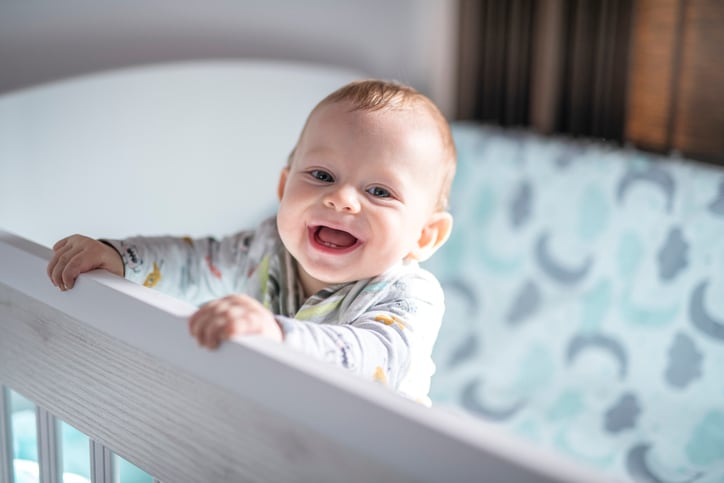A baby blanket is often more than just a cover to keep your little one warm. Handmade blankets can become family heirlooms that your child (and your future grandchildren) will cherish for years to come. There are several different baby blanket how-tos available, so it’s easy to find one that works best for your style and skill level. Before you start working, you should think about how and when you would like your little one to use the blanket.
Searching for childcare? Find carers in your area now.
Each baby blanket size can serve a different purpose. And remember, the American Academy of Pediatrics advises that babies younger than 12 months old shouldn’t sleep with a blanket in the crib.
- Blanket materials
When making a blanket for your little one, you should choose materials that are best suited for a baby’s sensitive skin. You should avoid using anything dense or scratchy. Soft, washable materials, like organic cotton and cotton fleece, work best. Wool is another good, durable choice, but you should avoid using it until you’re sure your baby doesn’t have an allergic reaction to this material.
- Receiving blankets
A bulky, large blanket just won’t work for your tiny bundle of joy. If you have a newborn baby, you should keep your blanket small and lightweight, as this allows for easy swaddling. Receiving blankets typically range in size from a small 18-inch square to a larger 36-inch square. Your little one might outgrow a smaller receiving blanket rather quickly. But you can still keep it around for snuggling purposes!
Double-layer blankets work great in the chilly winter months. But summer babies will need lighter blankets. It’s usually best to avoid loose knit and crochet blankets for infants. You should save these materials for a crib blanket, which your baby can use as he grows.
- Crib blankets
A typical crib blanket will be rectangular and measure around 40 inches by 60 inches. As with any baby blanket size, however, the specific dimensions are dependent upon the pattern you choose. This size works best for toddlers and babies who are older than 6 months, and can therefore easily free themselves from tangles. Crib blankets should be free of loose threads, buttons, yarns and large holes that can pose a safety risk for little ones.
Any receiving blanket pattern can be altered to a larger size for a crib blanket. Quilted blankets are also a great choice. Thicker options work best for cold winter days.
- Multi-use blankets
When you’re traveling with your baby, stroller blankets and activity blankets are essential items. A thick activity blanket can be used to provide a cushioned, clean surface for your baby to crawl and play. And the same blanket can double as a stroller or car seat cover during the chillier months! A good size for a multi-use blanket is 30 to 40 inches, as a blanket this size is big enough for play time but not so big that it covers an entire stroller or car seat.
Remember, because quilts and thicker blankets might have more threads, your little one should only use them with adult supervision.
Kit Arbuckle writes for numerous publications covering topics such as parenting, child care and health.
Read Next: Is Your Baby Teething Early? Here Are 4 Common Parent Worries
Read Next: Is a Postpartum Doula Right for You?


